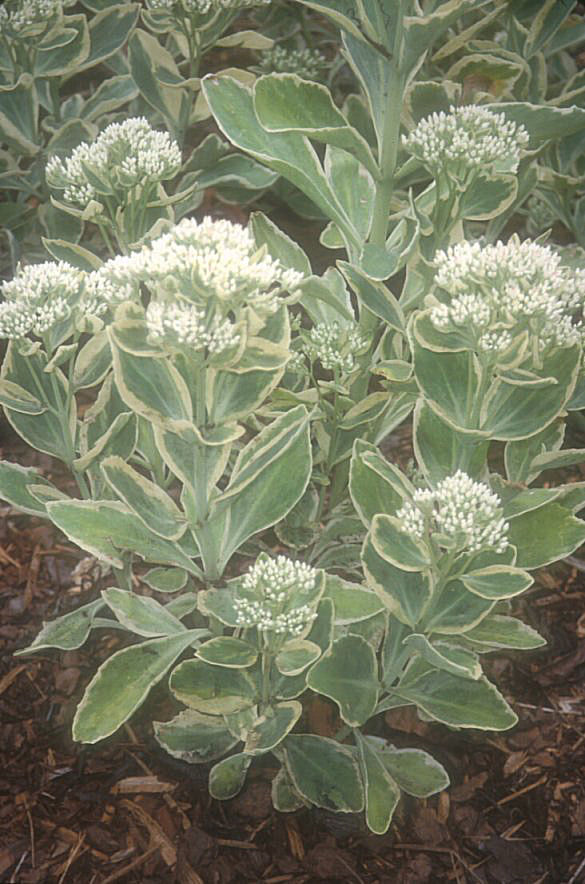| Botanical Name: Sedum 'Frosty Morn' | |
| Common Name: Frosty Mom Stonecrop |

-
Anatomy
-
Culture
-
Design
Plant Type
Perennial, Succulent
Height Range
Under 1'
Flower Color
White
Flower Season
Summer, Fall
Leaf Color
Grey Green, White, Variegated
Bark Color
n/a
Fruit Color
n/a
Fruit Season
n/a
Sun
Full
Water
Low
Growth Rate
Moderate
Soil Type
Sandy, Clay, Loam, Rocky, Unparticular
Soil Condition
Average, Rich, Poor, Well-drained, Dry
Soil pH
Neutral, Basic
Adverse Factors
n/a
Design Styles
English Cottage, Mediterranean, Ranch, Spanish
Accenting Features
Fall Color, Showy Flowers, Unusual Foliage
Seasonal Interest
Summer, Fall
Location Uses
Perennial Border, Parking Strip, Patio, Raised Planter
Special Uses
Container, Small Spaces
Attracts Wildlife
Butterflies
Information by: Stephanie Duer
Photographer: Sunny Border
Photographer: Sunny Border
-
Description
-
Notes
'Frosty Morn' is a small, upright, compact, clump-forming sedum that grows to 8 to 12 inches tall and wide, and features fleshy, succulent-like, green leaves with creamy white margins. Clusters of tiny, white to pinkish flowers cover the foliage mound from late summer to early fall. Attracts butterflies, not so much deer and rabbit. A full-sun sedum.
As a group, sedums prefer well-drained soils, including sandy-loam, clay-loam, or rocky soils, as long as it is well drained. In nature, most sedums occur in light shade or partly sunny sites, while a few are also well-adapted to full sun situations. They can tolerate both drought conditions or more frequent watering, but the key is good drainage. Their xeric nature makes sedums popular for use in rock gardens, roof gardens, wall gardens, and living wreaths.